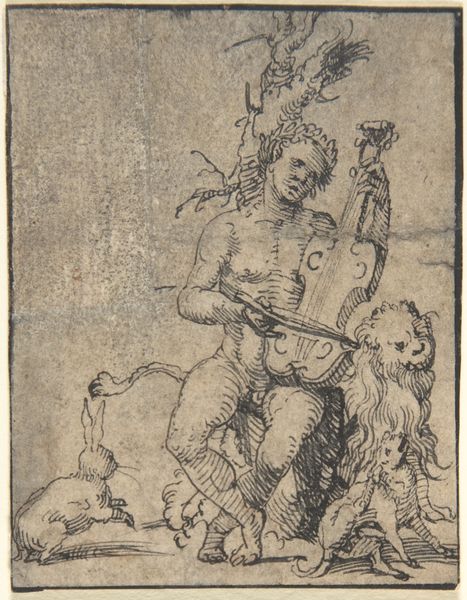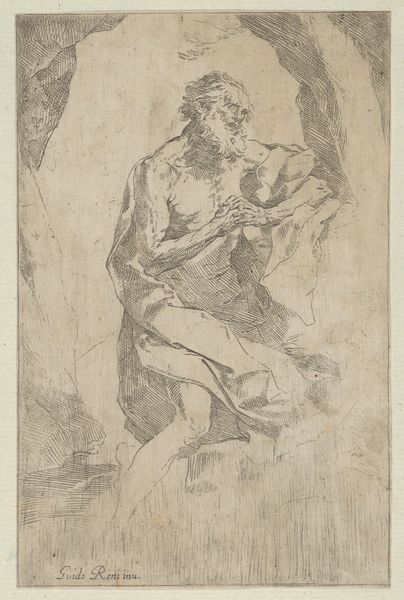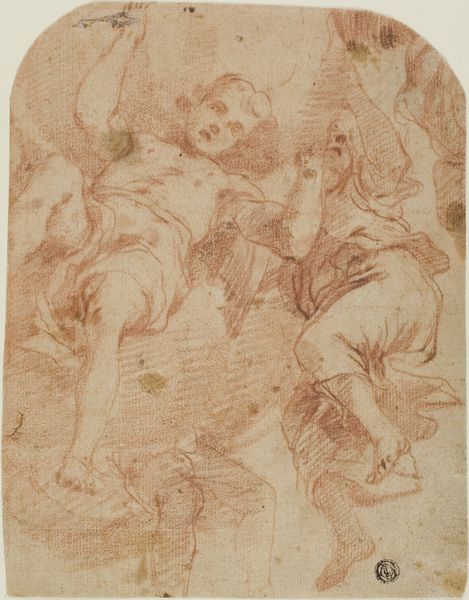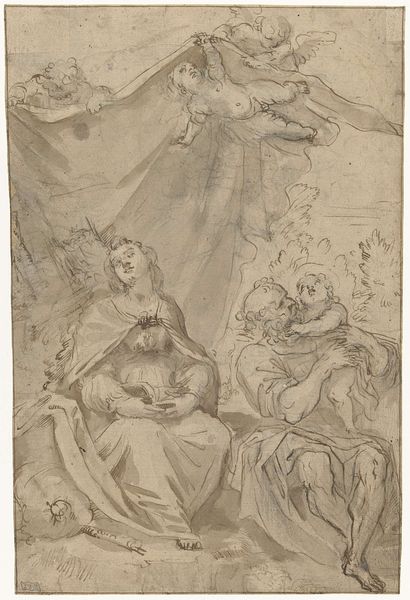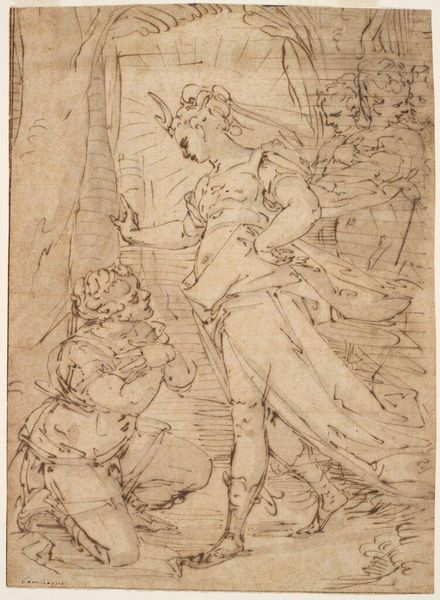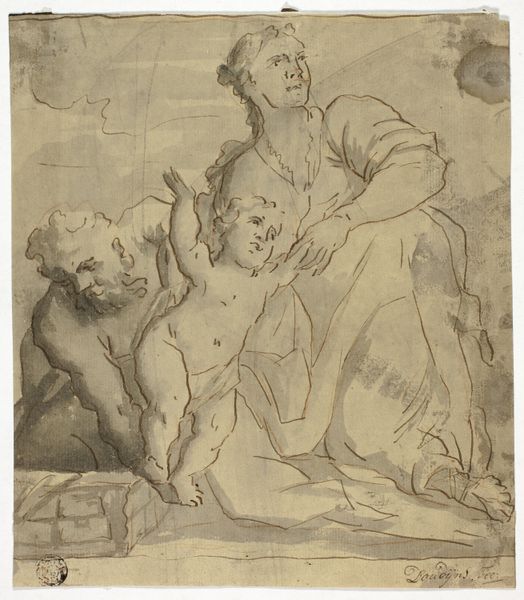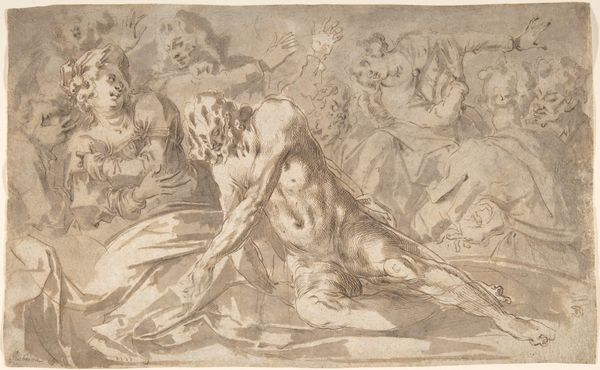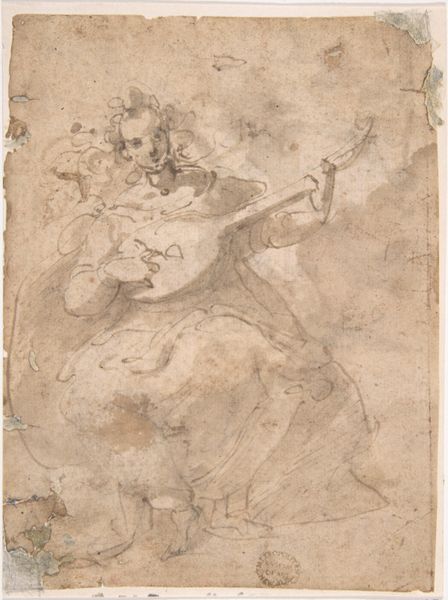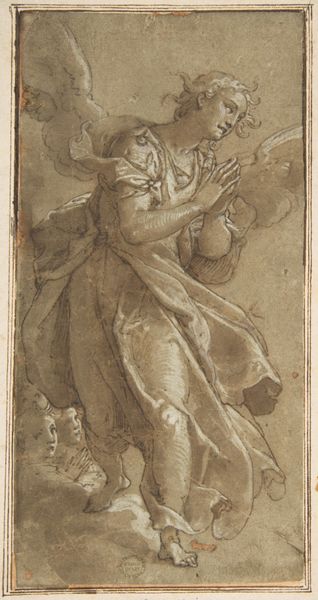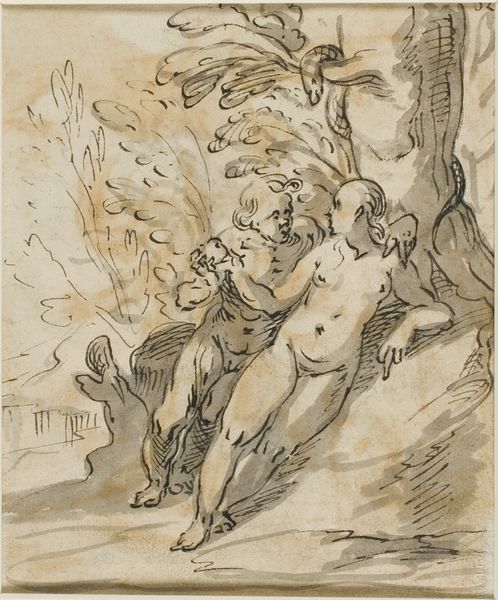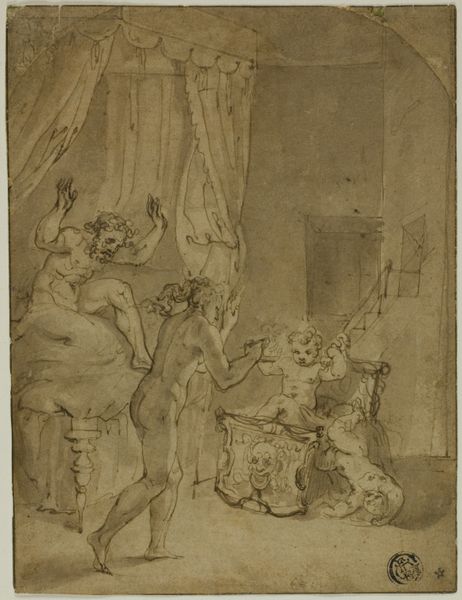
drawing, print, paper, ink, ink-drawings, chalk, pen, charcoal, black-chalk
#
portrait
#
drawing
# print
#
charcoal drawing
#
figuration
#
paper
#
11_renaissance
#
ink
#
ink-drawings
#
chalk
#
pen
#
charcoal
#
history-painting
#
academic-art
#
black-chalk
Dimensions: 152 × 119 mm
Copyright: Public Domain
Editor: Here we have an intriguing drawing titled "Holy Family with the Infant Saint John and Saint Anne," currently attributed to an anonymous artist. The work, rendered in pen, ink, charcoal, and chalk on paper, gives off a feeling of intimate domesticity. How do you interpret this depiction of the Holy Family, especially in its artistic context? Curator: Well, looking at this, I see more than just a domestic scene; I see a careful negotiation of power and gender roles within the religious framework. Consider the way Saint Anne, the elder matriarch, is positioned. She seems to both observe and guide the interaction between Mary, Jesus, and John. It begs the question: how does the artist utilize this familial scene to subtly comment on the authority vested in women, even within the patriarchal structures of Renaissance society? Also, look at the gaze… Who seems in charge of their own destiny, and who seems burdened by expectations? Editor: That’s a compelling point. I hadn't considered the dynamics of female authority so explicitly. The gazes do seem significant – almost as if each figure carries a specific weight or expectation. The use of different lines—some bolder, some mere suggestions—adds to that weight. Curator: Precisely. This wasn't simply about depicting a religious scene; it was also a statement, perhaps subtle, about the shifting roles of women and the burden of divine roles within Renaissance society. How does that reading sit with your initial impression of ‘intimate domesticity?’ Editor: It makes me reconsider my initial reaction completely! I still see the intimacy, but now I view it through a lens of constructed roles and expectations. The artist definitely layered meaning into what at first appears a simple family portrait. Curator: It highlights the intersectionality of religious doctrine, social norms, and gender dynamics prevalent at the time. It is not simply about piety; it's about power. What has this approach opened for you in how to see other works? Editor: It's taught me to look beyond the immediate subject matter and to think critically about the social and historical currents that might have shaped the artwork's creation and interpretation. Thank you for broadening my perspective.
Comments
No comments
Be the first to comment and join the conversation on the ultimate creative platform.
